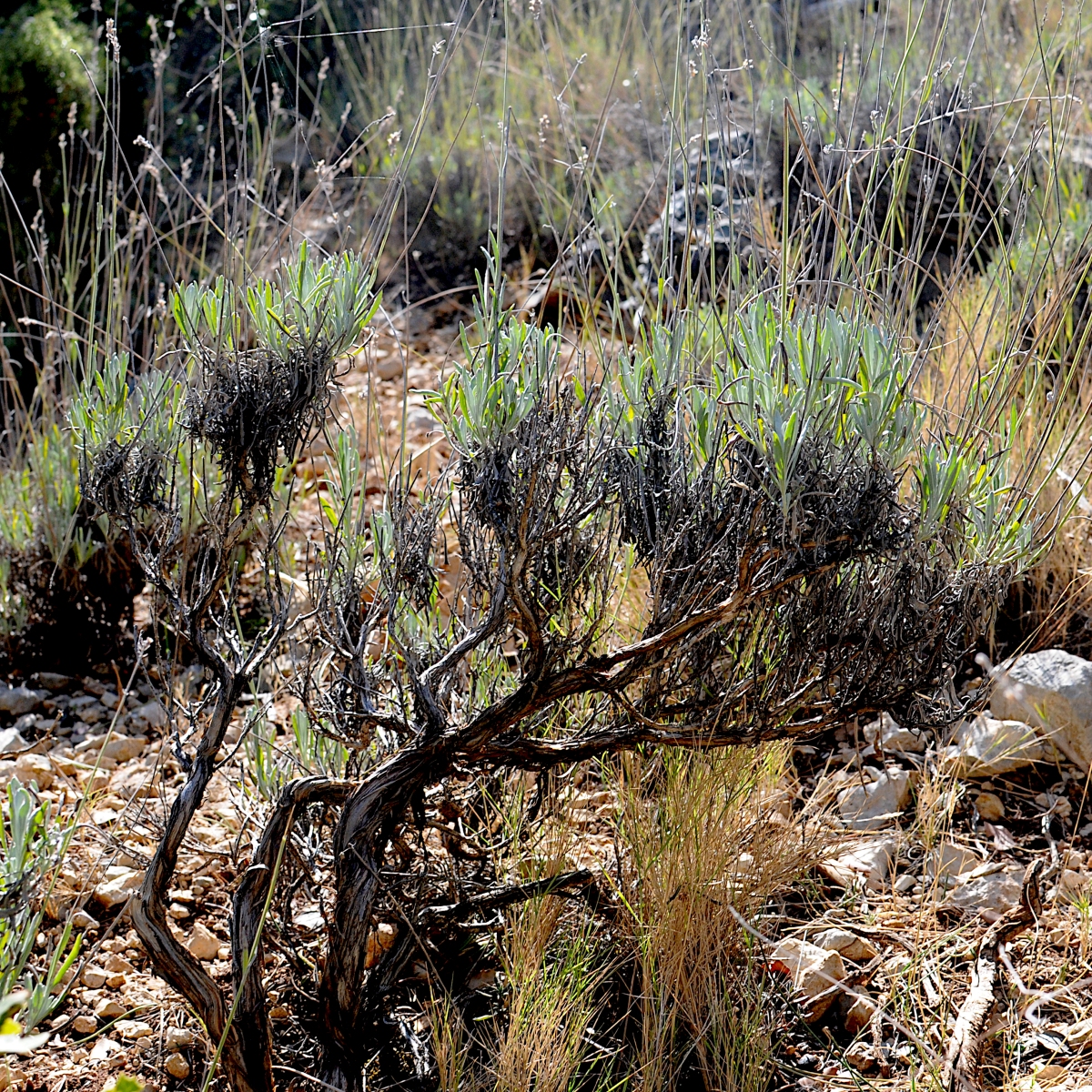The editor’s choice for our November issue is “Ecological significance of intraplant variation: Epigenetic mosaicism in Lavandula latifolia plants predicts extant and transgenerational variability of fecundity-related traits” by Carlos M. Herrera et al. Here, Associate Editor Richard Shefferson explains the importance of this research:
Plants do some strange things. We are surrounded by plants in our day-to-day lives, but take for granted how different from us they are. We are unitary and find it more difficult or even impossible to live when some of our parts are lost; plants are typically modular and, in many cases, can fragment into new individuals. We are sexual; plants are often sexual, often not, and often both sexual and clonal. We can reproduce at any time once past a given age; plants have reproductive seasons each year. We can move in search of better conditions and resources; plants are sedentary, and “move” when they disperse seeds and other propagules, or simply adjust to the environment via facultative sprouting and growth. These differences make plants both interesting and difficult to study, the latter particularly so because we cannot “think” like a plant. Such issues have plagued the evolutionary and population ecological study of plants in particular, and probably contributed to John Harper’s thinking when he stated, “There are few plants that are at all suitable for studying a process of continuous population growth, not only because most plants have life cycles and therefore discrete jumps of population size, but because the fixed rooted habit of most plants prevents them from moving about in search of the limited resources and escaping from their neighbours” (Harper 1977).
One of the more interesting hypotheses developed to understand plant evolution is the genetic mosaic hypothesis (Gill et al. 1995). This hypothesis states that the ability of plants to grow meristematically and form new modules provides them also with the ability to pick up novel genetic differences in different parts of their bodies, which may then propagate as those parts grow and colonize further space. These differences may allow them to weather the environment better over time and space, as natural selection plays out across the genetic novelty in different parts of the plant. This idea has a great deal of explanatory potential in plant evolution, although low documented somatic mutation rates in some plants have made some scientists wonder how important genetic mosaics really are.
An extension of this intriguing idea is the epigenetic mosaic hypothesis. This hypothesis states that meristems pick up epigenetic differences, such as different DNA methylation patterns, that they pass down to daughter modules. These methylation patterns may then propagate as those daughters grow and colonize new space, affecting the phenotype of the plant more broadly. This idea is interesting not just because of the accumulating interest in epigenetics and DNA regulation as mechanisms of phenotypic diversification, but also because of empirical evidence that epigenetic mechanisms are responsible for some heritable responses to the environment. For instance, some of the epigenetic responses that some plants make in response to drought are passed down at least two generations, making offspring and grand-offspring more likely to survive drought episodes (Herman et al. 2012). In humans, proclivity to type 2 diabetes and some other diseases is at least influenced by the dietary conditions that a person’s parents and grandparents experienced (Kaati et al. 2002), also suggesting possible transgenerational epigenetic effects.
Herrera et al. addressed this hypothesis, particularly asking whether their study plant, a species of lavender called Lavandula latifolia, exhibited an epigenetic mosaic in fitness-related traits. The study design was rigorous, involving the sampling of five modules from each of 15 wild plants. These modules were grown to seed, which were collected from these modules and planted in the greenhouse. All of these resulting offspring were characterized in terms of a variety of fitness-related phenotypic traits, and methylation state in different parts of the genome. In the end, methylation state explained reasonable components of the variance in traits such as inflorescence length, log total seed number, seed germinate rate, and fungal disease frequency.
The influence of inherited DNA methylation patterns on fitness-related traits is what is most important here. Transgenerational epigenetic effects on phenotypes are not necessarily new to the literature. But, to those of us who study how plants adapt to their environments, the ultimate question is to what extent epigenetic influences affect the outcomes of natural selection. Are these effects strong? Are they common? By dealing with strongly fitness-related traits, the authors show convincingly that these impacts at least need to be considered, and studied in other organisms and populations, as well.
Looking ahead, this study sets the stage for further interesting questions in plant evolutionary ecology. Some of these questions appear to be “passed down” from studies on the genetic mosaic hypothesis. For example, to what extent do long-lived plants utilize such inherited methylation patterns, and other transgenerational epigenetic mechanisms, to weather the environment in the very long-term? As someone who has travelled to see some of the oldest trees in the world, such as the bristlecone pines and giant sequoias of the California desert, I wonder to what extent these phenomenal plants rely on this approach to survive for the thousands of years that they do.
References:
Gill, D.E., Chao, L., Perkins, S.L. & Wolf, J.B. (1995). Genetic mosaicism in plants and clonal animals. Annual Review of Ecology and Systematics, 26, 423–444.
Harper, J.L. (1977). Population biology of plants. Academic Press, New York, New York, USA.
Herman, J.J., Sultan, S.E., Horgan-Kobelski, T. & Riggs, C. (2012). Adaptive transgenerational plasticity in an annual plant: grandparental and parental drought stress enhance performance of seedlings in dry soil. Integrative and Comparative Biology, 52, 77–88.
Herrera, C.M., Medrano, M., Bazaga, P. & Alonso, C. (In press). Ecological significance of intraplant variation: epigenetic mosaicism in Lavandula latifolia plants predicts extant and transgenerational variability of fecundity-related traits. Journal of Ecology, n/a.
Kaati, G., Bygren, L.O. & Edvinsson, S. (2002). Cardiovascular and diabetes mortality determined by nutrition during parents’ and grandparents’ slow growth period. European Journal of Human Genetics, 10, 682–688.

